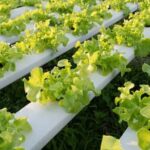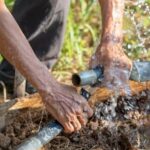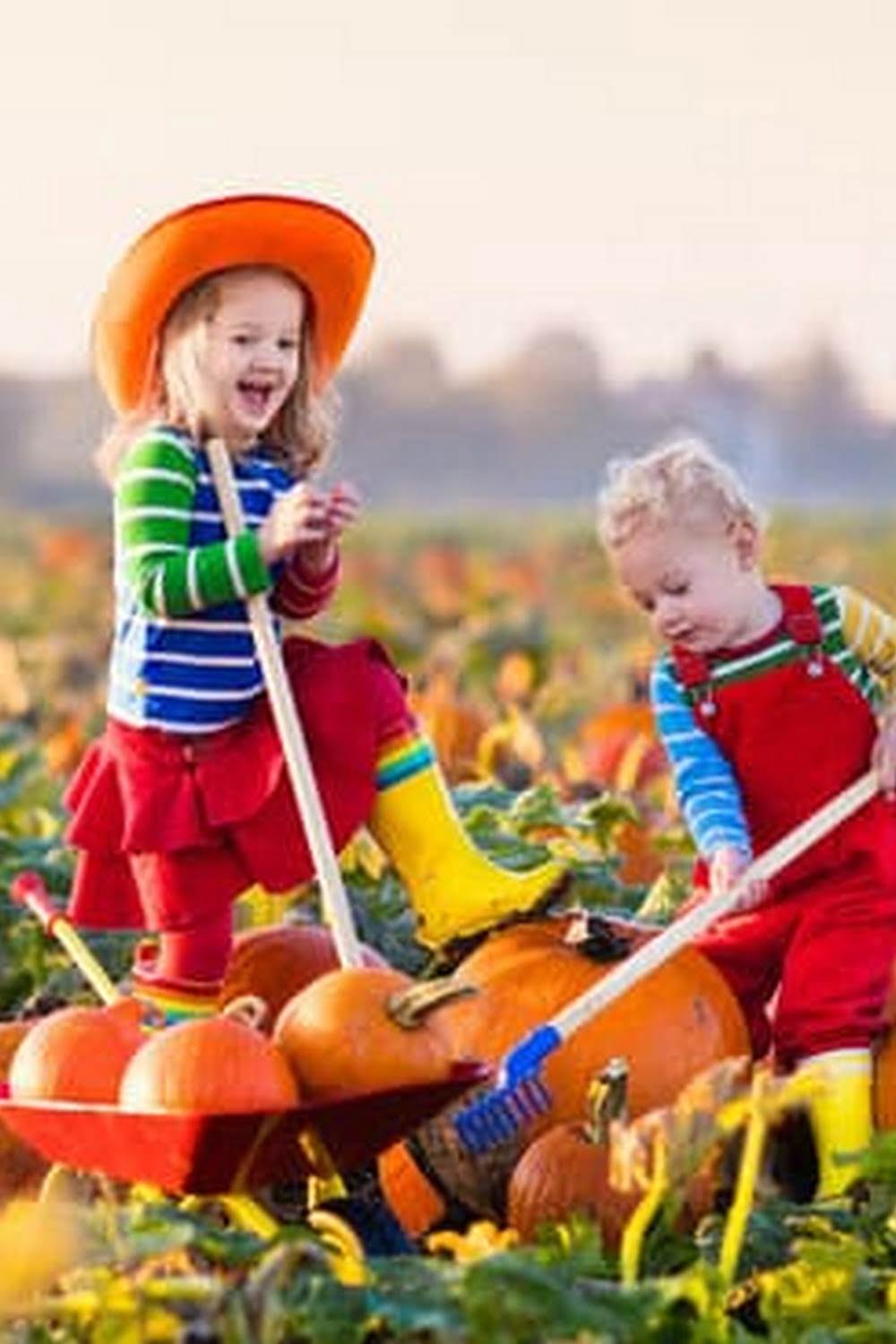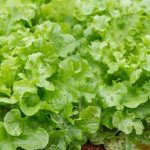Are you interested in growing your own vegetables but don’t have a garden? Look no further. Large containers for vegetable gardening can be the perfect solution for urban dwellers, apartment owners, and anyone with limited outdoor space. In this comprehensive guide, we will explore the many benefits of using large containers for vegetable gardening, including increased yield potential, better control over soil quality, and the ability to grow a wide variety of vegetables.
When it comes to choosing the right container for your vegetable garden, there are several factors to consider. We will discuss the importance of size, material, and drainage to ensure that your plants thrive in their new homes. Additionally, we will provide a detailed guide on selecting the best vegetables for large containers based on their size and growth habits.
Successful vegetable gardening in large containers starts with proper soil and drainage. We will share essential tips and techniques for creating optimal growing conditions to support healthy plant growth and bountiful harvests. Additionally, we’ll cover watering and maintenance practices to keep your vegetable garden thriving throughout the growing season. Whether you’re a beginner or experienced gardener, this guide will provide valuable insights into maximizing space and yield through innovative container gardening techniques.
Choosing the Right Container
When it comes to large containers for vegetable gardening, choosing the right container is essential for the success of your garden. There are several factors to consider when selecting a container for growing vegetables, including size, material, and drainage capabilities.
One of the most important factors to consider when choosing a container for vegetable gardening is size. The size of the container will determine how much soil it can hold, which in turn will affect the growth and yield of the vegetables you are growing.
Larger containers are generally better for vegetable gardening as they provide more space for root development and allow for a greater variety of plants to be grown within them. It’s important to choose containers that are at least 18 inches in diameter and 12 inches deep to accommodate most vegetable plants.
The material of the container is also an important factor to consider. While plastic containers are lightweight and easy to move, they can heat up quickly in the sun, potentially damaging the roots of your plants. Terracotta or ceramic pots are great options as they are porous and allow air and water to pass through, but they can be heavy and breakable.
Wooden containers offer good insulation for plant roots but may rot over time if not properly treated. Finally, fabric containers are becoming increasingly popular as they provide excellent drainage, air flow, and insulation while remaining lightweight and portable.
In addition to size and material, drainage capabilities should also be considered when choosing a container for vegetable gardening. Proper drainage is critical for preventing root rot and other water-related issues that can harm your vegetables. Make sure that your chosen containers have drainage holes at the bottom to allow excess water to escape and prevent waterlogged soil.
Selecting containers with saucers or trays underneath can help collect excess water without allowing it to saturate your plant’s roots. By considering these factors when choosing a container for your large vegetables garden, you can set yourself up for success from the start.
The Best Vegetables for Large Containers
When it comes to large containers for vegetable gardening, choosing the right vegetables to grow is essential for success. Not all vegetables are suited for container gardening, especially in larger containers. Here’s a comprehensive guide on the best vegetables to grow in large containers:
- Tomatoes: One of the most popular choices for large container gardening, tomatoes thrive in big pots and provide a bountiful harvest.
- Peppers: Whether it’s bell peppers, chili peppers, or sweet peppers, these vegetables do well in large containers and can be quite productive.
- Cucumbers: With their sprawling nature, cucumbers need a spacious container to spread out and produce an abundance of fresh fruits.
- Zucchini: These prolific producers are well-suited for large containers, as they require ample space for their extensive root systems.
In addition to these popular choices, other vegetables that are suitable for large containers include eggplants, beans, and dwarf varieties of squash or melons. When selecting vegetables for your large containers, consider the space each plant needs to grow and bear fruit. It’s also important to think about the depth of the container, as some veggies have deeper root systems than others.
Moreover, when planning your container vegetable garden, think about the variety of colors and textures you want in your garden. Mix different types of vegetables together to create an attractive and productive display. With careful selection and planning, you can have a thriving vegetable garden in even the largest containers.
Soil and Drainage
When it comes to large containers for vegetable gardening, soil and drainage are essential factors for successful growth and yield. The quality of the soil and the ability for excess water to drain properly can make all the difference in the health and productivity of your vegetable plants. In this section, we will explore some essential tips for soil preparation and proper drainage to ensure a thriving vegetable garden in large containers.
Soil Preparation
Before filling your large containers with soil, it’s crucial to prepare the soil mix to provide the necessary nutrients for your vegetables. A good quality potting mix with added organic matter such as compost or aged manure is recommended for optimal plant growth. Avoid using garden soil straight from the ground, as it may not provide the right balance of nutrients and can compact densely in a container.
Drainage Considerations
Proper drainage is vital for preventing waterlogged roots, which can lead to rot and other issues in your vegetable plants. To ensure adequate drainage in your large containers, consider placing a layer of rocks or gravel at the bottom before adding soil. Additionally, choose containers with drainage holes at the bottom to allow excess water to escape. If your chosen container does not have pre-drilled holes, you can carefully drill them yourself using a suitable drill bit.
Monitoring Moisture Levels
It’s important to regularly monitor moisture levels in the soil of your large containers. While vegetables need consistent watering, overwatering can be just as detrimental as underwatering. Use a moisture meter or simply stick your finger into the soil about an inch down to gauge whether watering is needed.
It’s also helpful to use mulch on top of the soil to help retain moisture and regulate temperature within the container. By paying attention to these essential tips for soil preparation and drainage, you can set up your large containers for vegetable gardening success.
Watering and Maintenance
When it comes to large containers for vegetable gardening, proper watering and maintenance are essential to keep your garden thriving. The size of the container plays a crucial role in determining how often you need to water your plants. Larger containers have more soil volume, which means they can hold more moisture and require less frequent watering compared to smaller pots.
One important factor to consider when watering your vegetables in large containers is the type of soil you are using. Well-draining soil is crucial for preventing waterlogging, which can lead to root rot and other plant diseases. It’s recommended to use a high-quality potting mix specifically formulated for container gardening, as this will ensure proper aeration and moisture retention for your plants.
In addition to watering, regular maintenance is key to keeping your vegetable garden healthy. This includes monitoring for any signs of pests or diseases, pruning and trimming as needed, and providing support for vining or tall-growing plants. By staying on top of maintenance tasks, you can prevent potential issues from escalating and ensure that your vegetables continue to thrive throughout the growing season.
| Container Size | Frequency of Watering |
|---|---|
| Small Containers | Every 1-2 days |
| Medium Containers | Every 2-3 days |
| Large Containers | Every 3-4 days |
By following these watering and maintenance tips, you can ensure that your large container vegetable garden remains productive and healthy, yielding a bountiful harvest of fresh, homegrown produce for you and your family.
Container Gardening Techniques
Container gardening is a fantastic way to grow vegetables, herbs, and fruits in limited spaces. By using large containers for vegetable gardening, you can maximize the space available to you and increase your yield. There are various techniques that can be employed to make the most of your container garden.
Vertical Gardening
One technique to maximize space in large containers for vegetable gardening is vertical gardening. This involves growing plants upwards by utilizing trellises, stakes, or cages. Vegetables such as tomatoes, cucumbers, and beans are well-suited for vertical gardening. Not only does this method save space, but it also provides better air circulation which can prevent diseases and pests.
Succession Planting
Succession planting is another effective technique for maximizing yield in a container garden. This involves planting different crops in the same container at different times in order to make the most of the available space and extend the harvest season. For example, you can plant fast-growing radishes or lettuces alongside slower-growing vegetables like peppers or eggplants.
Interplanting
Interplanting is a technique where multiple vegetable plants are grown together in one large container. By pairing compatible plants that have different heights or growth habits, you can effectively utilize every inch of the container. For example, combining low-growing lettuce with tall broccoli or kale in the same container allows both plants to thrive without competing for space.
By employing these container gardening techniques, you can optimize your large containers for vegetable gardening and enjoy a bountiful harvest from even small outdoor spaces or balconies.
Troubleshooting Common Issues in Large Container Vegetable Gardening
When it comes to large containers for vegetable gardening, there are certain common issues that gardeners may encounter. It’s important to be aware of these issues and know how to troubleshoot them in order to ensure a successful and thriving vegetable garden. One common issue is overwatering, which can lead to root rot and other problems. To prevent this, make sure the containers have proper drainage and water the vegetables only when the top inch of soil feels dry.
Another common issue is nutrient deficiency, as plants in large containers may deplete the soil nutrients more quickly than those in traditional gardens. To address this issue, consider using a slow-release fertilizer specifically formulated for container gardening and regularly monitor the plant’s leaves for any signs of yellowing or discoloration.
Pests such as aphids, spider mites, and caterpillars can also be troublesome in large container vegetable gardening. These pests can be controlled through organic methods such as handpicking or using insecticidal soap.
In addition, choosing the right container size is crucial to avoid issues with crowding and restricted root growth. Some vegetables require larger containers than others, so be sure to research each type of vegetable you plan to grow in large containers and provide them with adequate space for their roots to develop properly. By being proactive in addressing these common issues, you can ensure a bountiful harvest from your large container vegetable garden.
| Common Issues | Troubleshooting Tips |
|---|---|
| Overwatering | Ensure proper drainage and water when top inch of soil is dry |
| Nutrient Deficiency | Use slow-release fertilizer for containers; monitor plant leaves for signs of yellowing |
| Pests | Control pests through organic methods like handpicking or insecticidal soap |
| Container Size | Research each vegetable’s requirement and provide adequate space for root development |
Creative Container Ideas
There are countless creative and innovative designs for large containers for vegetable gardening that can inspire and elevate your gardening experience. Whether you have limited space or simply want to add a decorative touch to your garden, the possibilities are endless when it comes to choosing the right containers for your vegetables. Here are some creative container ideas to consider:
- Vertical Gardens: Utilize wall space by installing vertical gardening systems or using hanging planters to grow vegetables such as tomatoes, peppers, and herbs.
- Repurposed Containers: Think outside the box and repurpose items such as old barrels, crates, or even boots as unique planters for your vegetable garden.
- Tiered Planters: Take advantage of vertical space with tiered planter boxes or shelves, allowing you to grow a variety of vegetables in one compact area.
In addition to these creative container ideas, you can also consider incorporating sustainability into your vegetable gardening by using eco-friendly containers made from recycled materials. These environmentally-friendly options not only promote sustainable practices but also add a unique aesthetic appeal to your garden. Furthermore, experimenting with different shapes, sizes, and colors of containers can add visual interest and character to your vegetable garden.
When selecting large containers for vegetable gardening, it’s important to choose designs that not only suit your personal style but also complement the specific needs of the vegetables you plan to grow. Whether you opt for traditional terracotta pots or modern self-watering planters, the key is to find containers that provide adequate space for root growth and proper drainage while adding beauty and creativity to your garden space.
Conclusion
In conclusion, large containers for vegetable gardening are a trend that is here to stay. As more and more people embrace urban living and small living spaces, the need for innovative gardening solutions has become increasingly important. Large containers offer the flexibility to grow a wide variety of vegetables in limited space, making them an ideal choice for urban gardeners and those with smaller outdoor areas.
The future of large container gardening for vegetables looks promising, as advancements in container materials and design continue to make it easier and more efficient to grow produce in these unconventional spaces. Additionally, as more people become interested in sustainable living and growing their own food, large containers provide a practical solution for cultivating fresh vegetables at home.
With the right container, soil, and maintenance techniques, gardeners can expect bountiful yields from their large container vegetable gardens. As interest in organic produce and sustainable living continues to grow, we can expect to see even more innovation and creativity in the world of large container gardening.
So whether you’re new to gardening or looking to expand your vegetable growing capabilities, consider investing in large containers for your next gardening endeavor. With a bit of planning and care, you’ll be sure to enjoy the fruits (and vegetables) of your labor.
Frequently Asked Questions
What Are the Cheapest Containers for Growing Vegetables?
The cheapest containers for growing vegetables are often recycled items such as buckets, milk jugs, or even old storage containers. These can be repurposed to create affordable options for growing vegetables at home.
How Many Vegetables Can I Grow in a 5 Gallon Container?
In a 5-gallon container, you can grow various vegetables including tomatoes, peppers, cucumbers, and herbs like basil or parsley. It’s important to consider the spacing and depth requirements of each plant to ensure successful growth.
How Big of a Planter Do I Need for Vegetables?
The size of the planter you need for vegetables depends on the specific vegetable you want to grow. Larger plants like tomatoes or peppers require deeper and wider planters, while smaller herbs may only need a smaller pot. It’s essential to research the needs of each vegetable before choosing a planter size.

If you’re looking to get into vegetable gardening, or are just looking for some tips on how to make your current garden better, then you’ve come to the right place! My name is Ethel and I have been gardening for years. In this blog, I’m going to share with you some of my best tips on how to create a successful vegetable garden.





